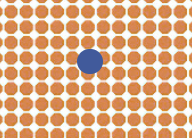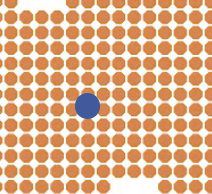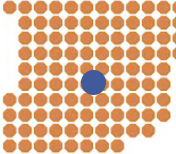BIBLIOGRAPHIC DATA:
Film Title: The Secrets (Hebrew: Ha‑Sodot) Director: Avi Nesher Year Made: 2007 Country of Production: Israel (co-production with France) Language(s) of Film: Hebrew (primary), also some French and English Length of Film: 127 minutes.
GENRE:
Feature drama
SYNOPSIS:
Noemi (Ania Bukstein), the intelligent and devout daughter of a prominent ultra-Orthodox rabbi, has recently lost her mother, who likely died from depression. Defying expectations, Noemi postpones her arranged marriage to Michael (Guri Alfi), her father’s esteemed student, who—despite her intellectual brilliance—treats her with subtle derision as a woman. Instead, she chooses to pursue religious studies at a women’s seminary in Safed.
There, she is paired with Michelle (Michal Shtamler), a worldly and independent-minded young woman recently returned from France. Their paths cross with Anouk (Fanny Ardant), a terminally ill French woman with a troubled past who seeks spiritual atonement through mystical Jewish rites. In an effort to help Anouk, Noemi studies ancient Kabbalistic texts and develops a purification ritual—despite Anouk being viewed as too burdened by guilt to merit forgiveness.
As the two students perform the Kabbalistic ritual, they develop a romantic relationship that is unacceptable within their ultra-Orthodox environment. Their actions bring them into conflict with rabbinic authorities, who are disturbed that women would dare to engage in mystical practice. Noemi also clashes with her family, leaves home, and refuses to marry. Over time, she becomes estranged from Michelle as well, who ultimately chooses to marry Yanky (Adir Miller) and return to a more traditional life.
Through their attempt to help Anouk, Noemi and Michelle confront questions of faith, guilt, desire, and the limits of religious tradition. In doing so, they challenge the boundaries of belief and the rigid structures of the world they inhabit.
BACKGROUND CONTEXT:
The Secrets (2007) was directed by Avi Nesher and co-written with Hadar Galron. Galron, an award-winning female religious playwright and screenwriter who was raised in an Orthodox Jewish environment, drew on her personal experience to shape the script. Nesher, a veteran Israeli filmmaker known for both art-house and popular secular films that blend psychological depth with sociocultural critique, brought a longstanding interest in social tensions and religious life to the project. The film was an Israeli–French co-production, shot largely in Safed—a city closely associated with Jewish mysticism (Kabbalah)—and featured the French actress Fanny Ardant as Anouk, reinforcing its cross-cultural framing.
The film emerged amid a mid‑2000s wave in Israeli cinema that increasingly examined religion, gender, and authority—from earlier touchstones like Amos Gitai’s Kadosh (1999) to contemporaneous and later works such as Ushpizin (2004), My Father My Lord (2007), and Eyes Wide Open (2009). Within this climate, The Secrets reflects shifting debates over women’s learning and spiritual agency in ultra‑Orthodox settings, including the expansion of advanced women’s textual study (midrashot) without parallel formal rabbinic ordination. Galron’s earlier stage work (e.g., Mikveh, 2004) similarly probed women’s lives under halakhic norms, providing additional context for the screenplay’s focus.
At the same time, the film mirrors a growing curiosity among secular Israelis about religious and mystical practices. As a production led by largely secular creators, it presents the ultra‑Orthodox world as simultaneously familiar (within the national discourse) and distant—often perceived as exotic or even esoteric to secular audiences.
KEYWORDS:
Kabbalah, Avi Nesher, Safed, ultra-Orthodox society, religious studies.
ACADEMIC COMMENTARY:
The Secrets, mostly set in Safed—a historical center of Jewish mysticism—focuses on the performance of a Kabbalistic ritual, and for that reason alone it engages with esotericism. Focusing on the ritual of Tikkun (“repair” or “rectification”), it shows how Jewish prayers and rituals become magical, esoteric instruments—a practice that is not uncommon in strands of modern Judaism (Guzmen-Carmeli and Rubin 2014). However, it should not be seen as a literal or precise depiction of an actual Kabbalistic rite. Rather, the film explores the nature of esotericism not through documentary accuracy, but through the imaginative lens of feature cinema. It raises broader questions about how esotericism functions—both within religious communities and from the perspective of secular observers. Esotericism is not a fixed concept, but one that shifts along the boundaries between esoteric and exoteric, normative and transgressive, visible and hidden. These shifting lines shape not only spiritual authority but also broader social structures and moral frameworks.
To secular Israeli audiences, the ultra-Orthodox world depicted in the film appears esoteric—closed, coded, and saturated with concealed knowledge. Nesher presents the concept of Tikkun with distinctly secular and modern overtones—reframing it through a quasi–New Age lens of spiritual self-improvement, combined with a vision of social repair, such as advancing gender equality within a traditionally patriarchal society (Ogren 2024, 83-84). The film thus illustrates shifting boundaries between traditional religiosity and modern secular values, where religious practice is often perceived as esoteric, while esoteric concepts themselves are reinterpreted in terms of individual growth and social transformation.
Yet similar boundary-crossings unfold within the religious world itself: ordinary prayer, study, and ritual can become esoteric practices, while the normative frameworks of everyday religious life may be disrupted or transgressed. When Noemi chooses to attend a midrasha and aspires to become a rabbi—a role traditionally inaccessible to women—she crosses into a space considered abnormal. This leads her and Michelle to perform the ritual of Tikkun to help Anouk, a dying woman, atone for her past. In this context, traditional ritual elements become esoteric tools, blurring normative boundaries and creating moral and social dilemmas.
In Kabbalistic tradition, Tikkun entails a descent into the realm of brokenness and impurity for the purpose of spiritual repair (Dan 2005, 57-58, 77-83). Motivated by compassion, Noemi and Michelle undertake this process through confession, immersion (mikveh), psalm recitation, and invocation of divine names. In doing so, however, they also expose themselves to the very forces—desire, impurity, risk—that they seek to redeem.
Noemi’s improvisation of a ritual from traditional Jewish forms illustrates the generative and boundary-crossing character of esotericism. The film portrays esotericism not simply as hidden knowledge, but as a space of creativity, transgression, and moral questioning. The Secrets ultimately probes how religious and societal norms are constituted, when they are challenged, and who holds the authority to transform them.
Bibliography:
Dan, Joseph. 2005. Kabbalah: A Very Short Introduction. Oxford: Oxford University Press.
Guzmen-Carmeli, Shlomo, and Nissan Rubin. 2014. “Tikkun (Divine Repair) and healing in a kabbalistic yeshiva: Using sacred texts as healing devices.” Contemporary Jewry 34, no. 3: 217-241.
Ogren, Brian. 2024. Reel Kabbalah: Jewish Mysticism and Neo-Hasidism in Contemporary Cinema. London and Oxford: Rutgers University Press.








